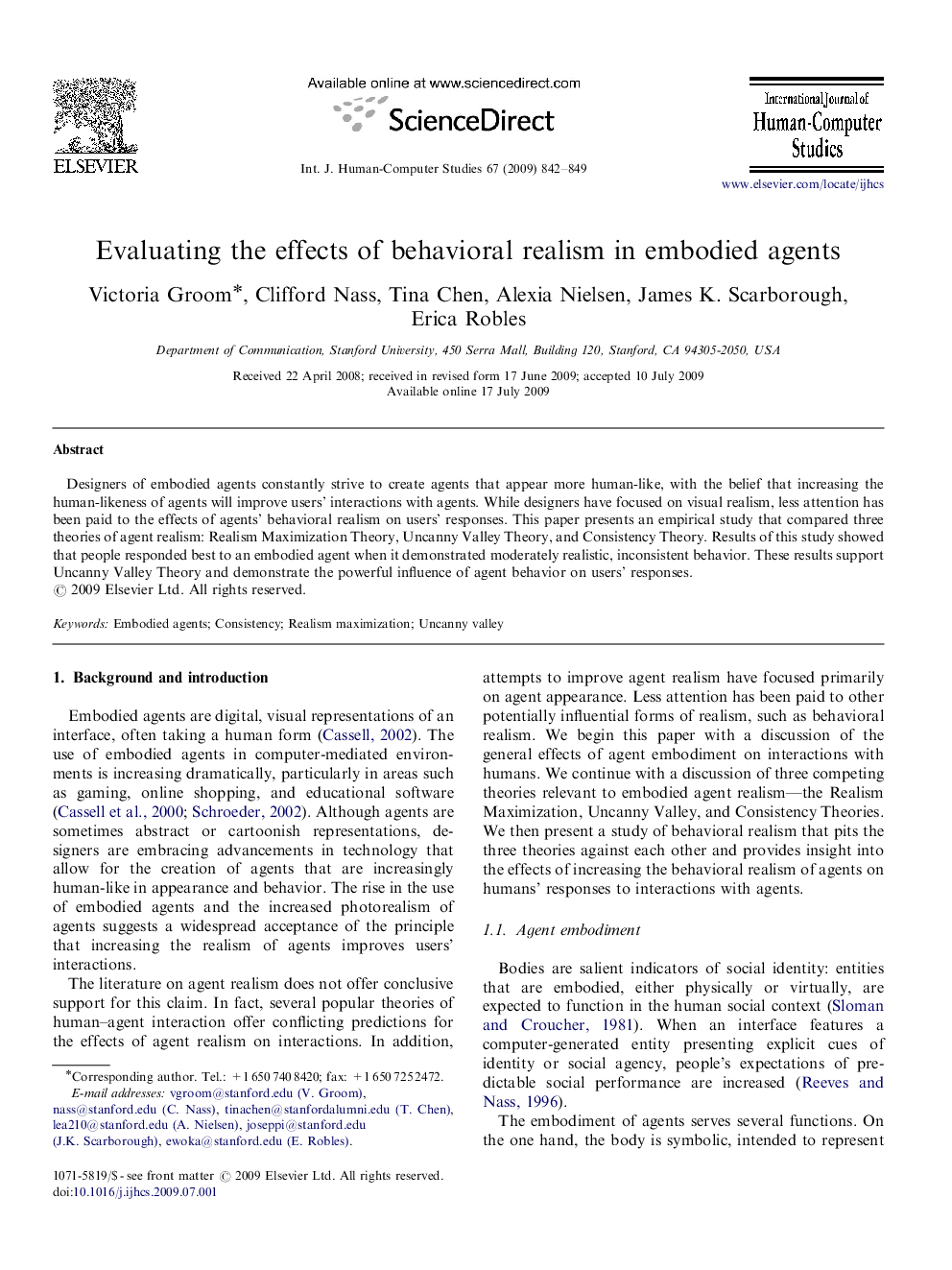| Article ID | Journal | Published Year | Pages | File Type |
|---|---|---|---|---|
| 401039 | International Journal of Human-Computer Studies | 2009 | 8 Pages |
Designers of embodied agents constantly strive to create agents that appear more human-like, with the belief that increasing the human-likeness of agents will improve users’ interactions with agents. While designers have focused on visual realism, less attention has been paid to the effects of agents’ behavioral realism on users’ responses. This paper presents an empirical study that compared three theories of agent realism: Realism Maximization Theory, Uncanny Valley Theory, and Consistency Theory. Results of this study showed that people responded best to an embodied agent when it demonstrated moderately realistic, inconsistent behavior. These results support Uncanny Valley Theory and demonstrate the powerful influence of agent behavior on users’ responses.
